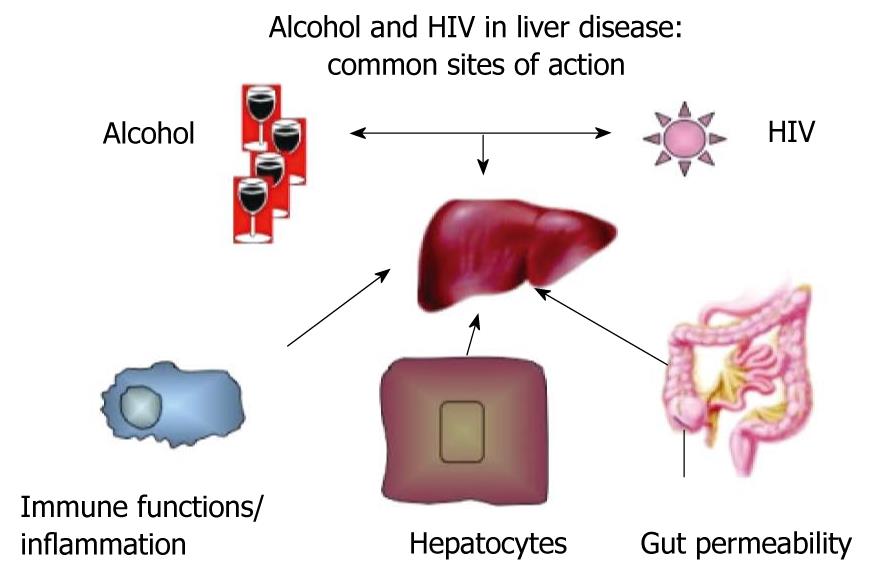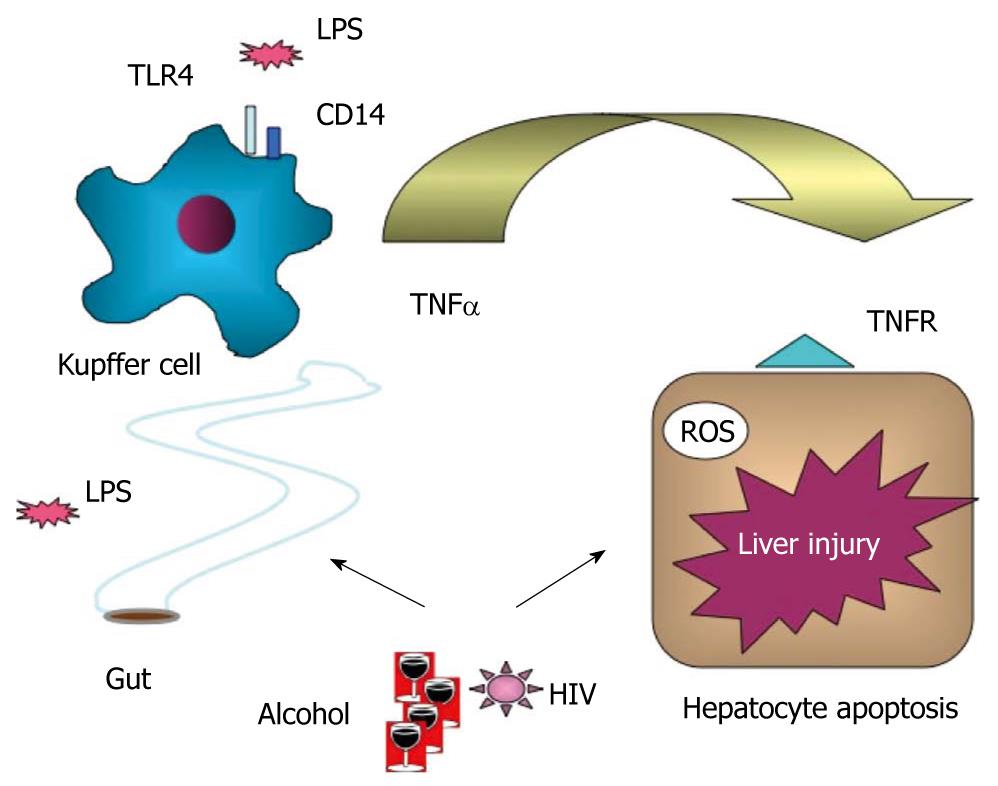Copyright
©2011 Baishideng Publishing Group Co.
World J Gastroenterol. May 28, 2011; 17(20): 2500-2506
Published online May 28, 2011. doi: 10.3748/wjg.v17.i20.2500
Published online May 28, 2011. doi: 10.3748/wjg.v17.i20.2500
Figure 1 Alcohol and human immunodeficiency virus in liver disease.
There are multiple common sites of action of alcohol and human immunodeficiency virus (HIV) infection that contribute to the development of liver disease. These include modification of immune functions and inflammatory responses, functions of hepatocytes and intestinal permeability.
Figure 2 Alcohol-induced hepatocyte damage is amplified by human immunodeficiency virus infection.
The current model of alcohol-induced liver disease includes increased gut-derived lipopolysaccharide (LPS) entry into the liver where Kupffer cells are activated via LPS/Toll-like receptor (TLR) 4 and produce tumor necrosis factor (TNF)α. Human immunodeficiency virus (HIV) infection also increases gut-derived LPS levels in the circulating blood. Increased production of TNFα will act on alcohol-exposed hepatocytes to induce apoptosis. ROS: Reactive oxygen species.
- Citation: Szabo G, Zakhari S. Mechanisms of alcohol-mediated hepatotoxicity in human-immunodeficiency-virus-infected patients. World J Gastroenterol 2011; 17(20): 2500-2506
- URL: https://www.wjgnet.com/1007-9327/full/v17/i20/2500.htm
- DOI: https://dx.doi.org/10.3748/wjg.v17.i20.2500










